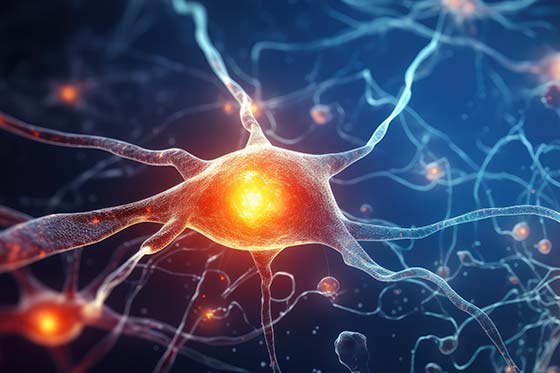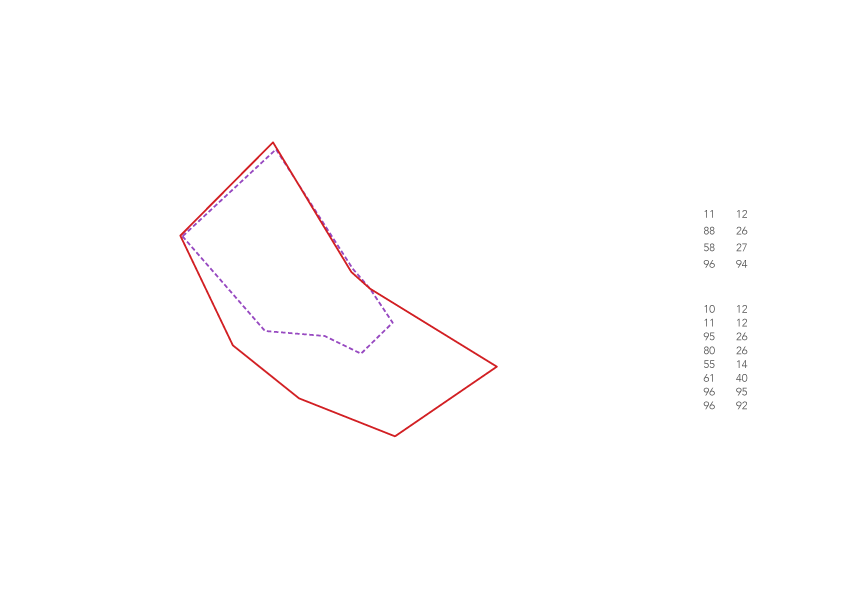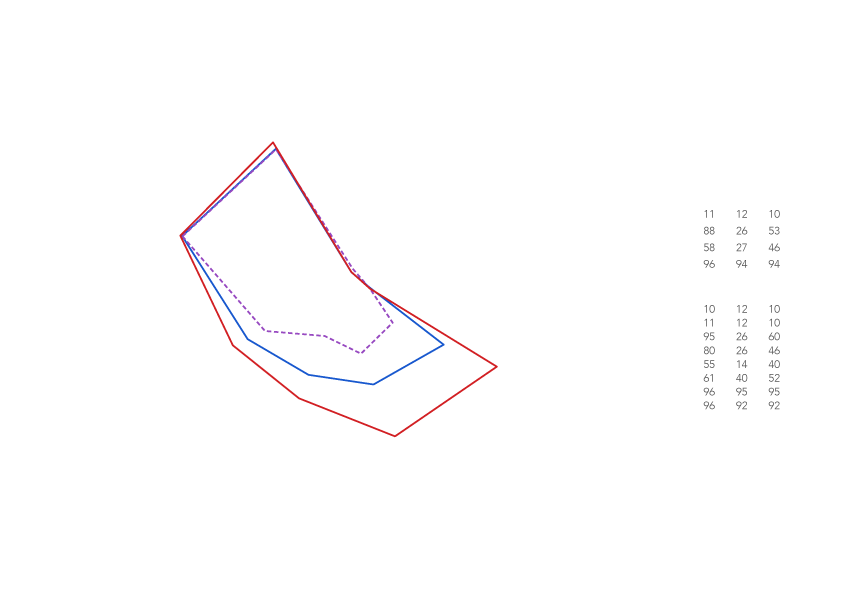What is PRISM?
PRISM is a revolutionary way of identifying people’s behaviour preferences.
PRISM approaches human behaviour from the perspective of neuroscience, rather than psychological theory. This exciting online tool takes advantage of some of the most up-to-date neuroscience discoveries to provide users with a series of ‘maps’ which are representations of how they prefer to respond to the world around them. At the root of PRISM is the basic fact that all human behaviour is brain driven.
Each PRISM ‘map’ is a picture of the user as a unique individual.

PRISM is not a psychometric test. It is designed to measure self-expressed and observed human behavioural preferences – not personality. The reason for this is that personality is only one of a number of factors, such as our work environment and past experiences, that can influence our overall behaviour. Also, on occasions we can exhibit significant differences between our behaviour and our personality. Unlike many psychometric tests, PRISM is not based on the work of any one individual. It is based on the cumulative research carried out by a significant number of neuroscientists who have contributed much to our current understanding of the brain and behaviour.
PRISM provides a powerful graphic explanation for why
people approach situations and individuals in different ways.
PRISM’s reports show not only people’s natural or instinctive behaviour preference, but also the extent and the way in which they modify or adapt their preference to respond to the demands of specific situations e.g. their job.
The reports also indicate where individuals may be overdoing or not making full use of their preferences. This insight helps them to understand more about their true potential, as well as what may be hindering them from achieving high performance.
The remarkable complexity of the brain has shown that human beings cannot credibly be divided up into a fixed number of types or groups of people who are unable to act outside of their profiles. PRISM does not, therefore, label people or fit them into ‘boxes’, nor does it have ‘scores’, or right or wrong answers. Instead, it provides users with a powerful, graphic explanation for why they approach situations and individuals in different ways.
Because PRISM is based on perception, it is obvious that if perceptions change, behaviour will change too. The dynamic interaction between perception of self and the environment explains why an individual may behave differently from one situation to another.

“PRISM provides the insight for people to make better choices about what is going on in the present moment. It also helps them to reframe what is going on and to refocus their attention to achieve better outcomes. PRISM interfaces well with mindfulness. We know that mindful awareness changes the brain.”
Jeffrey Schwartz is a Research Psychiatrist at UCLA School of Medicine and a researcher in the field of self-directed neuroplasticity and obsessive-compulsive behaviour.
PRISM is about
observed behaviour
It measures the intensity of a person’s expressed preference for a range of behaviours and the activities related to those behaviours. To facilitate understanding, PRISM uses colours to illustrate these behaviour preferences. Although the PRISM model is a schema for brain functioning, the PRISM maps represent the dynamic interaction that takes place within the brain and is based on the principle that no one part of the brain does solely one thing and no one part of the brain acts alone.
All our thoughts, emotions and actions are the results of many parts of the brain acting together.
Left Hemisphere
Right Hemisphere





Why was PRISM created?
The Origins of PRISM
PRISM takes its origins from ‘The Decade of the Brain’ which was launched by U.S. President George H. W. Bush in 1990 as part of a larger effort involving the US Library of Congress and the National Institute of Mental Health of the National Institutes of Health: “to enhance public awareness of the benefits to be derived from brain research.”
A prototype version of PRISM was launched in 2002 and the system has been subjected to ongoing refinement, enlargement, and validation since then.
At the root of PRISM is the basic fact that all behaviour is brain-driven

NEUROPLASTICITY

One of the most exciting discoveries in recent years in the field of neuroscience is what is known as ‘neuroplasticity’ or ‘brain plasticity’. It is the ability of the brain to modify its connections or re-wire itself. All of our mental activity is influenced by the way our brain cells (neurons) behave. The more we think a certain way, the more we reinforce the way our brain wires itself. In other words, how we think affects our brains and our brains, in turn, affect how we think. This is called ‘experience-dependent’ neuroplasticity because the way we choose to experience the world changes our brains. This is why so many athletes now have neuroscience-trained coaches.
The adult brain can and does adapt, develop and change, even into old age.
How was PRISM created?
Stage 1
Behaviour and the brain’s chemical systems
This stage involved identifying from published research the primary behaviour dimensions related to four brain chemical systems comprising neurotransmitters and hormones. It is important to note that all the information used during this stage was obtained from more than 120 published studies by acknowledged experts in the field of neuroscience, and not from any one individual. The number and nature of those studies enhances both the validity of their own findings and the validity of the PRISM measurement scales which are based on those findings.
Stage 2
The PRISM behaviour measurement scales
The next stage involved creating, from the extensive data collected at Stage 1, the scales necessary to enable the instrument to become an accurate method of measuring the four primary behaviour groups identified at Stage 1.
To validate the instrument initially, the questionnaire was completed anonymously by 2,437 men and women whose ages ranged from 19 to 60 years of age. The Cronbach’s alpha scores obtained from the sample averaged 0.8 for those groups. Further, refinements to the questionnaire were made in the light of that study.
Stage 3
Traditional psychometric measurement and validation techniques
The final stage involved using external academic sources, in 2007 and 2014, to validate, using traditional psychometric validation methods, the measurement scales created at Stage 2 – not the neurobiology which underpins those scales. The most recent independent validity study in 2014 indicated that the Cronbach’s Alpha (internal consistency) scores for all the eight PRISM dimensions averaged 0.9. A general rule of thumb is that solid scientific instruments should have a Cronbach’s Alpha of at least 0.7.
The Stage 3 process is most important because it clearly shows that PRISM is a very accurate measurement instrument.
“The validity studies provided strong support for the validity and reliability of the English version of the PRISM scale. These findings are further strengthened by the international and cross-cultural nature of the sample that was used in this study. The power of PRISM is that it is not a classification tool in the traditional sense. In other words, the tool is not used to classify individuals into only one dimension. The PRISM model recognises that individuals will have characteristics from all eight dimensions to a greater or lesser extent. What is produced is a unique ‘brain map’ that shows the individual’s preferred ways of working, and also those behaviours they would rather avoid. ”
More information regarding the validity study can be found by clicking these relevant links (will open a PDF document in a new window)
Various scientific studies have shown that the four brain chemical systems which underpin PRISM are different in terms of how they influence behaviour. Brain circuits and networks – not just the number of brain cells – are the key to brain function. It is important to regard brain circuits as ‘relationships’. Those that are nurtured survive and strengthen; those that are neglected diminish and disappear. This is the essence of neuroplasticity.
In November 2013, a group of researchers from Einstein College of Medicine, New York, the University of California, Santa Barbara, and Rutgers University, New Jersey, published a report based on a totally independent study of the same four brain chemical systems as used in the construction of the PRISM measurement scales in 2002. For details of that study see:
Brown LL, Acevedo B, Fisher HE (2013) – Neural Correlates of Four Broad Temperament Dimensions: Testing Predictions for a Novel Construct of Personality. PLoS ONE 8(11): e78734.
What are PRISM maps?
PRISM maps represent the dynamic interaction that takes place within the brain.
The PRISM method of presenting behaviour by creating ‘maps’ that are visual representations of a person’s behavioural preferences – as expressed through answers provided to the PRISM questionnaire – is in keeping with the principle of Gestalt psychology. This principle maintains that ‘the whole is different from the sum of its parts’. PRISM emphasises the study of behaviour as a whole rather than simply focusing on independently functioning, disparate parts. PRISM is designed to measure a person’s expressed preferences for each of eight dimensions of behaviour. The expressed preferences are plotted as levels of intensity on eight axes and the plots are joined up to form a ‘map’ which is overlaid on the PRISM schema. The ‘maps’ are designed to show the intensity of the respondent’s self-expressed preferences for the relevant behaviours and not the specific physical location of those behaviours within the brain.




Left Hemisphere
Right Hemisphere





The basic PRISM model is a ‘schema’ of the human brain.
A schema is a diagrammatic representation of a complex system (such as the brain) to aid understanding. The first use of schemas as a concept was in 1932 by a British psychologist, named Frederic Bartlett, as part of his learning theory.
Please click here to read our notes regarding the presentation of neuroscientific research.
The PRISM schema provides a highly simplified, metaphorical representation of how the brain’s functional architecture and four of its chemical systems: dopamine, serotonin, testosterone, and oestrogen, interact to create specific behaviour groupings. Although behaviour is produced by the interaction of specific chemicals and networks, it is important to bear in mind that no one part of the brain does solely one thing and no one part of the brain acts alone. While many functions are, indeed, associated with particular areas, each function nonetheless depends on interactions in widely distributed networks involving many different areas. It follows, therefore, that PRISM does not subscribe to the once widely held belief that people are either ‘right-brained’ or ‘left-brained’. This was commonly referred to as ‘brain dominance’ – a theory now totally discounted by neuroscientists.
What some of our clients say...
I have used PRISM for the past five years in a wide range of settings from Government agencies to company boardrooms, and no other tool matches it for the ease of use despite its sophistication. Providing a PRISM map is…
I have completed many tools such as PRISM, but what makes PRISM distinct is that it validates and empowers everyone by helping to identify their strengths and provides positive affirmation of the value of each individual. It further links to…
I was initially very sceptical when I was asked to complete my PRISM profile. However, maintaining an open mind I have begun to embrace the numerous personal and professional benefits PRISM has brought me in both AIESEC and my daily…
We have used PRISM for well over a decade now and can say without doubt it has been the most useful tool we use. We have used it with an incredibly wide range of our clients, from large corporate businesses within the financial sector…
We have been using PRISM for over 10 years now. It has been of significant benefit in our recruitment activity, helping us to benchmark people and align the right people with the right roles. It has also been invaluable in terms of exploring team…
‘Star of SAS: Who Dares Wins’ TV series.
We have been using PRISM for over 10 years now. It has been of significant benefit in our recruitment activity, helping us to benchmark people and align the right people with the right roles. It has also been invaluable in terms of exploring team…
Organisations that have used PRISM





















